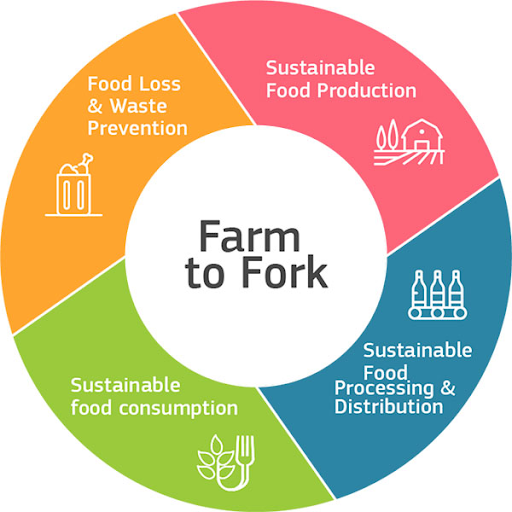TOPIC 3, PART 1 FARM TO TABLE.
‘Farm to table’, also known as ‘farm to fork’, is a movement which promotes cooking and serving local food. It means specifically that the ingredients come directly from farmers to restaurants or individual consumers. Local food networks can create communities that support such food initiatives. The idea is to make people aware of where their food comes from.
Food trucks present a way to ensure that consumers get fresh locally grown food directly from the source (like a farm).
Online shopping can make the farm-to-table activity a lot easier. Giving your consumers the option to purchase your products online can be a smart move for an agricultural business. It is convenient for the consumer and it can be more eco-friendly, as only one delivery vehicle can be used to transport several products to different people instead of each costumer driving to a store (or a farm) and back.
The farm-to-table approach follows sustainability and self-sustainability principles, creating local markets and spaces for farms and consumers in which they can work together and ensure keeping the demand-supply balance. Farmers who are well aware of their customers’ needs are able to maintain their business by offering the right amount of quality products at the right time (or throughout the year), which is key to achieving sustainability.
When deciding what crops to grow, consider the two main categories of crops: annual and perennial. Annual crops are crops that do not last more than two growing seasons and typically only one. These crops can be further divided into 1) winter crops, which are sown in autumn and harvested in the summer of the next year, and 2) spring and summer crops, which are sown and harvested in the same year. In the EU, wheat, rapeseed, and rye are typically winter crops. Maize, sunflowers, rice, soybeans, potatoes, and sugar beet are summer crops. Barley is commonly used as both varieties, winter and spring. Perennial crops are crops (e.g. fruit trees and vines) that last for more than two growing seasons, either dying back after each season or growing continuously; these are also called permanent crops. The weather conditions play an important role when it comes to quality and quantity of your crops, and consequently when it comes to food prices. When thinking about which annual crops to use, consider soil conditions and crop rotations or cover crops (different crops like grass, small grain, or legumes that farmers plant in the time periods between growing their cash crops). Cash crops are the farming crops grown to sell for profit. Catch and cover crops (or CCC crops) are crops that can protect agricultural land, which would otherwise be bare and in danger due to erosion and nutrient losses. When managed correctly, CCC can help us mitigate greenhouse gas emissions and fight climate change through building up the organic carbon content of the soil (see ‘carbon farming’ under Topic 4 of this module for more information). The most popular species of CCC are ryegrasses, mustards, clovers, vetch, oats, phacelia, and rye.
As part of its Green Deal, the EU Farm to Fork Strategy wants to rethink the entire food value chain in order to improve its sustainability.

Image 1: Farm to Fork
Image source: https://www.europarc.org/european-policy/farm-to-fork-protectes-areas/


 Čeština
Čeština Ελληνικά
Ελληνικά Slovenian
Slovenian Deutsch
Deutsch Polski
Polski